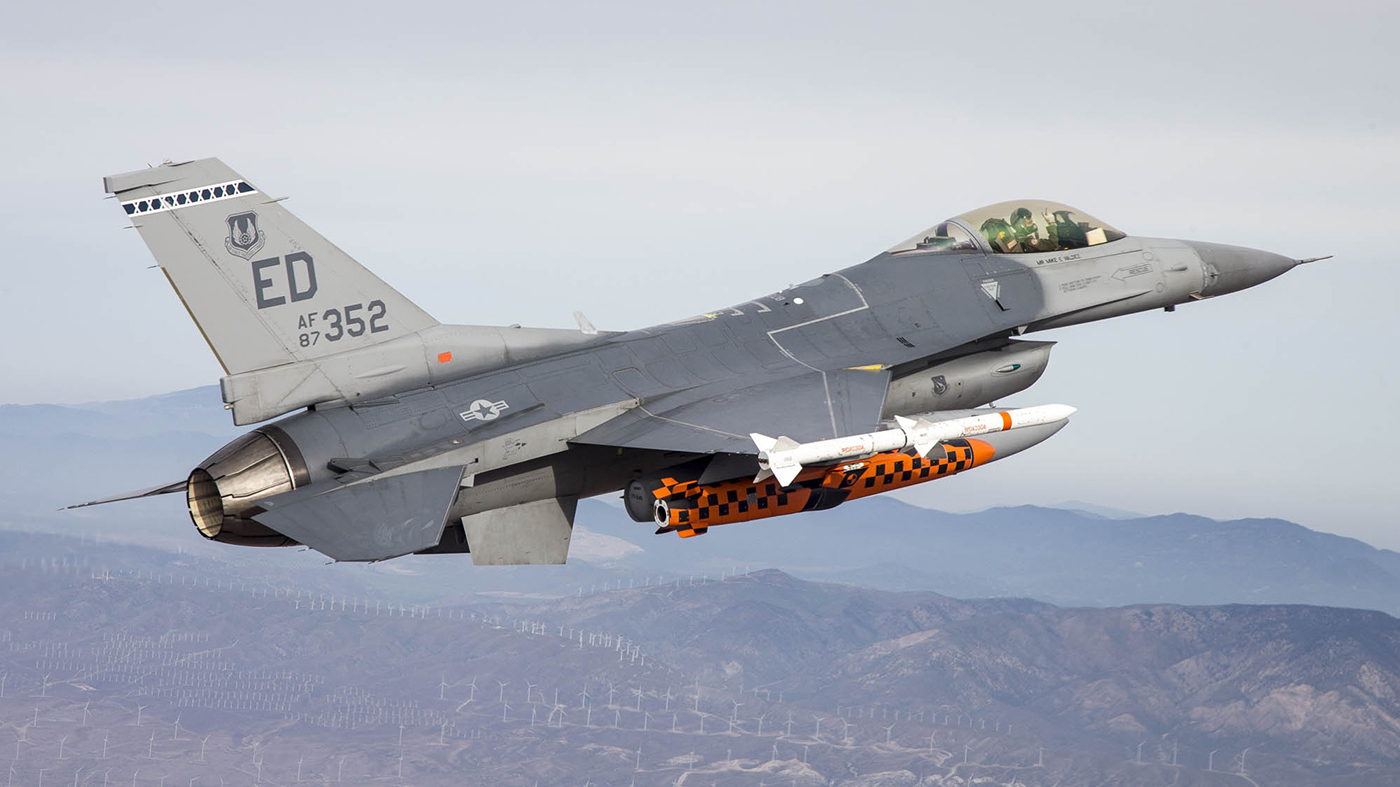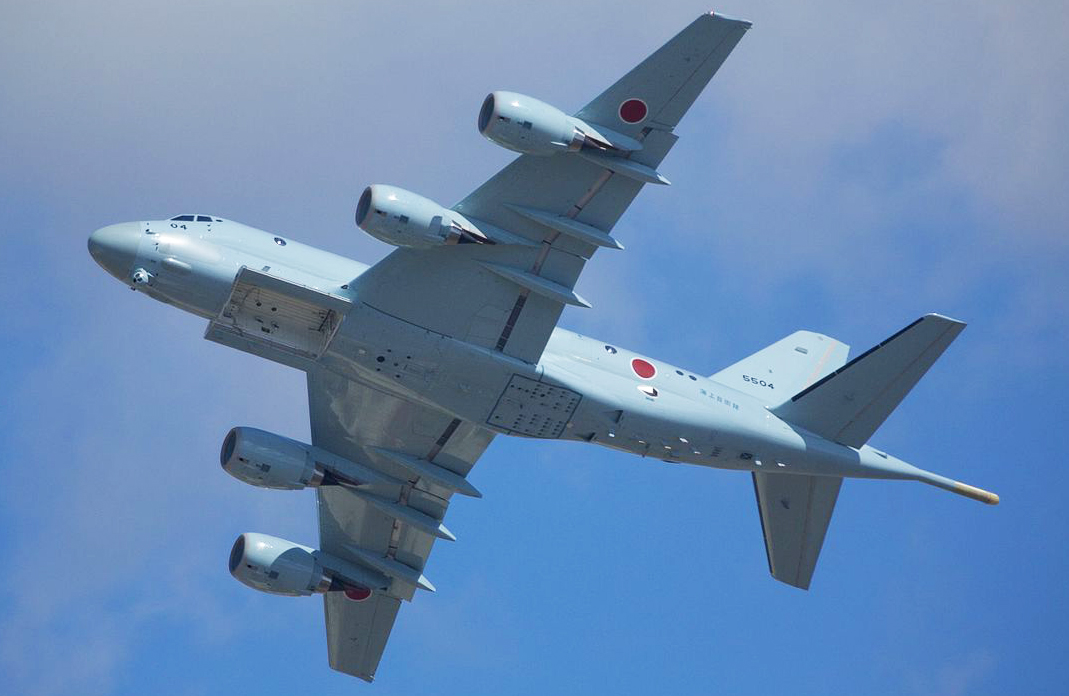It was recently announced that Norway’s Kongsberg Defense & Aerospace and Japan’s Ministry Of Defense have inked a deal to procure the first of what is likely to become a robust stockpile of Joint Strike Missiles (JSM). The cruise missile fits inside the confines of the F-35A’s internal weapons bays, and clearly, they are being bought with Japan’s F-35As in mind, but the acquisition gives its military far more capability than just a new anti-ship missile and it is yet another sign of Japan’s morphing military and strategic posture.
The JSM is based on Naval Strike Missile (NSM) and was developed in partnership with Raytheon. The JSM has a top range of roughly 350 miles and a low altitude penetration range of about half that. It carries a 500lb warhead and is guided by a navigation suite that includes GPS, INS, and terrain mapping—the latter of which will help out greatly in GPS denied environments.
JSM has an imaging infrared (IIR) seeker for extremely precise terminal homing. Kongsberg Defense describes how the missile’s targeting and terminal homing function works as such:
“The JSM features sophisticated target acquisition with Autonomous Target Recognition (ATR) facilitated by an imaging infrared seeker. Advanced recognition algorithms provide capability to identify targets to ship class and prevent attack of white/neutral shipping. There is a 100% confidence in separation of “white”and “red” shipping. The JSM mission planning system incorporates a national database with a library of potential targets. A sub-set of the target library is down-loaded to the JSM prior to launch. For each target class in the data base there will be a set of recognition characteristics, a default aim point position together with a corresponding warhead fuze profile, and default missile end-game tactics. Prior to launch, the operator may inspect and modify the end-game tactics and aim point. Kongsberg will provide customers with a software application package and training for target library development.”

It also has a two-way data-link for connectivity throughout its mission, allowing for the launch aircraft to keep tabs on its progress, abort its mission, or even retarget the missile in-flight.
JSM is built to be very maneuverable and to be able fly a round-about path to its target in complex littoral environments in order to give it the best chance at surviving. All of this is packed into a stealthy and highly agile airframe that can be slung under the wings of just about any tactical jet or packed into the F-35’s weapons bays.
So, we are talking about an incredibly flexible, near dream-like weapon here. But the most intriguing part of all is that it isn’t just an anti-ship cruise missile—it is also fully capable of attacking targets on land.
Let me put that another way—Japan is arming itself with a very capable land attack cruise missile that can be fired from its most advanced warplane.

Japan has never fielded a land attack capable cruise missile. Some would heavily argue that doing so goes against Article VI of its constitution. But the way Article IV is being looked at is rapidly changing within the Japanese political apparatus. Japan is shedding its passive, inward looking, self-defense oriented military posture for a new expeditionary and outward looking one.
Maybe the biggest sign of this is the fact that the Japanese MoD has admitted that their Izumo class aircraft carriers are just that, aircraft carriers, not ‘helicopter carrying destroyers,’ by purchasing 42 F-35Bs to fill their decks. Not since World War II has Japan fielded a flattop with fixed-wing aircraft capability.

Japan has always been concerned with defending its island territory from naval attack. Part of this strategy has meant fielding fighter aircraft capable of delivering standoff strikes against naval targets with anti-ship cruise missiles has been a top priority. But, in the past, the tactical applications of Japan’s cruise missiles ended at the sea. With threats from North Korea, China, and even Russia growing, being able to strike targets on land via tactical aircraft at standoff distances is taking on a whole new imperative, especially as those foes’ anti-access capabilities, including advanced long-range air defenses, grow.
JSM gives Japan the ability for its launch platform, the stealthy F-35A, and the missile itself, to penetrate deep into contested territory. Together, the F-35A—of which Japan plans on acquire at total of 105 at this time—and JSM combo allow for Japan to strike targets over a range of nearly 1,000 miles without refueling, and about 750 miles with the JSM flying its most stealthy low-level infiltration profile. This means that theoretically, this weapons combo could hit targets from Japanese territory as far away as Beijing, Hong Kong, and anywhere in North Korea, but it’s more accurate to figure it could put targets at risk over 150 miles inland from any coastline within the aircraft’s 600 mile combat radius.

The JSM is most adept at hitting targets in the most challenging geographical environments, the so called ‘brown water’ areas—the complex littorals where land and sea meet. Yet when it comes to an anti-ship capability, its F-35A launch ship does it a lot of favors. It can penetrate closer to areas where enemy flotillas may be operating without being detected and pinpoint ships using its advanced sensors and information from third party sensors piped into its cockpit via data-link. It can then send the JSM on its way to do the most dangerous work, attacking the actual ships, which may be highly defended by air-warfare destroyers and cruisers or even carrier-based fighters.
JSMs will also likely be carried by Japan’s F-35Bs once they get delivered and begin working off of the country’s refitted Izumo class carriers. In that case, they will have to be carried externally as the F-35B has smaller weapons bays. But still, the F-35B has a combat radius of some 450 miles and it has the same sensor fusion capabilities its land-based A model cousin. The JSM should, at least in some cases, give the B model enough survivability even when in non-stealthy mode for it to launch the missile at a standoff distance and retreat to safer territory even when prosecuting very well defended naval targets. So, the Izumo class and its F-35Bs will bring a whole new level of anti-shipping capability as well as stand-off land attack capability, especially when it comes to pinpoint strike on things like inland air defense radars, to the Japan Maritime Self Defense Force.
Don’t be surprised if this weapon finds itself on other aircraft in Japan’s arsenal as well, such as the Mitsubishi F-2, a jet whose primary role is to lug anti-shipping missiles. In fact, the JSM would be a great companion to the ASM-3 anti-ship missile that is currently in development.
This is a supersonic anti-ship missile currently in the late stages of development that will equip the F-2s in the future. It has a smaller range than the JSM, but layering them in with stealthy and subsonic JSMs during an attack on a flotilla would likely have very synergistic results.

Japan’s quad jet-powered P-1 maritime patrol aircraft that is currently equipped with the AGM-84 Harpoon is another very enticing candidate for the JSM. It would give the long-range jet the ability to hit targets in more complex geographical environments, such as pinpointing and striking ships in port or even land targets.

The F-15J force is another possible ‘customer’ for the JSM. We have written extensively about Japan’s increasing interest in arming the F-15s with a standoff land attack missile system. JSM offers a lot of flexibility and now commonality in that department, although there are longer-ranged weapons available that could take better advantage of the F-15s heavy hauling capabilities.
Above all else, the announcement that Japan has purchased a land attack capable cruise missile not only is another sign of the country’s changing strategic posture, but also of what is to come. Will an even longer-ranged cruise missile follow, like the air-launched JASSM-ER? Or maybe the Japan’s interest in multi-role Block IV Tactical Tomahawk missiles for its Mk41 vertical launch system-equipped destroyers and even possibly its Aegis Ashore missile defense sites will turn into an acquisition program (a VLS capable JSM is also available). We also previously discussed how Japan may develop its own family of land attack cruise missiles that can be launched from air, sea, or land.
Such possibilities are far more plausible now than they were before Japan decided to buy the Joint Strike Missile.
Contact the author: Tyler@thedrive.com
